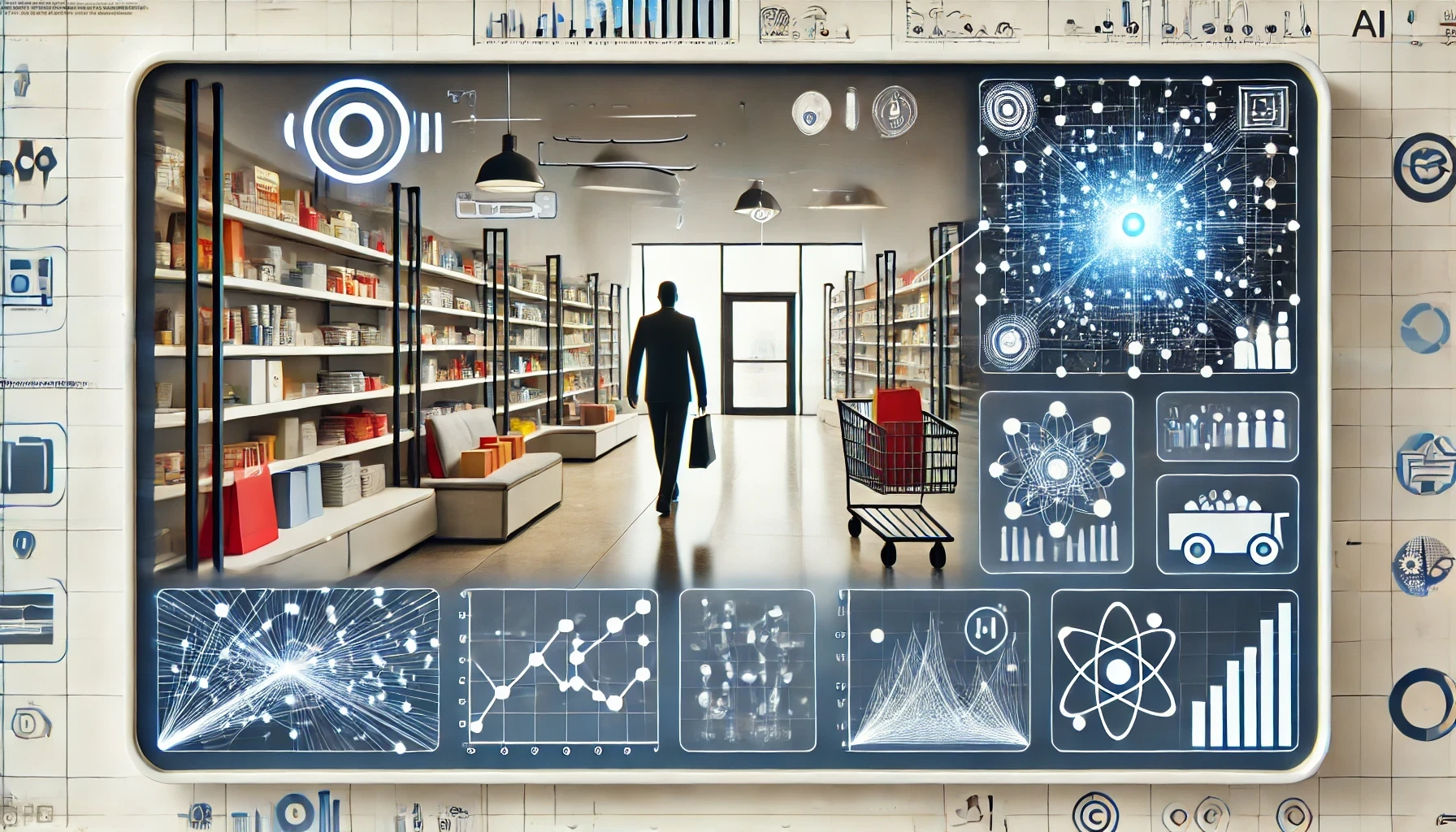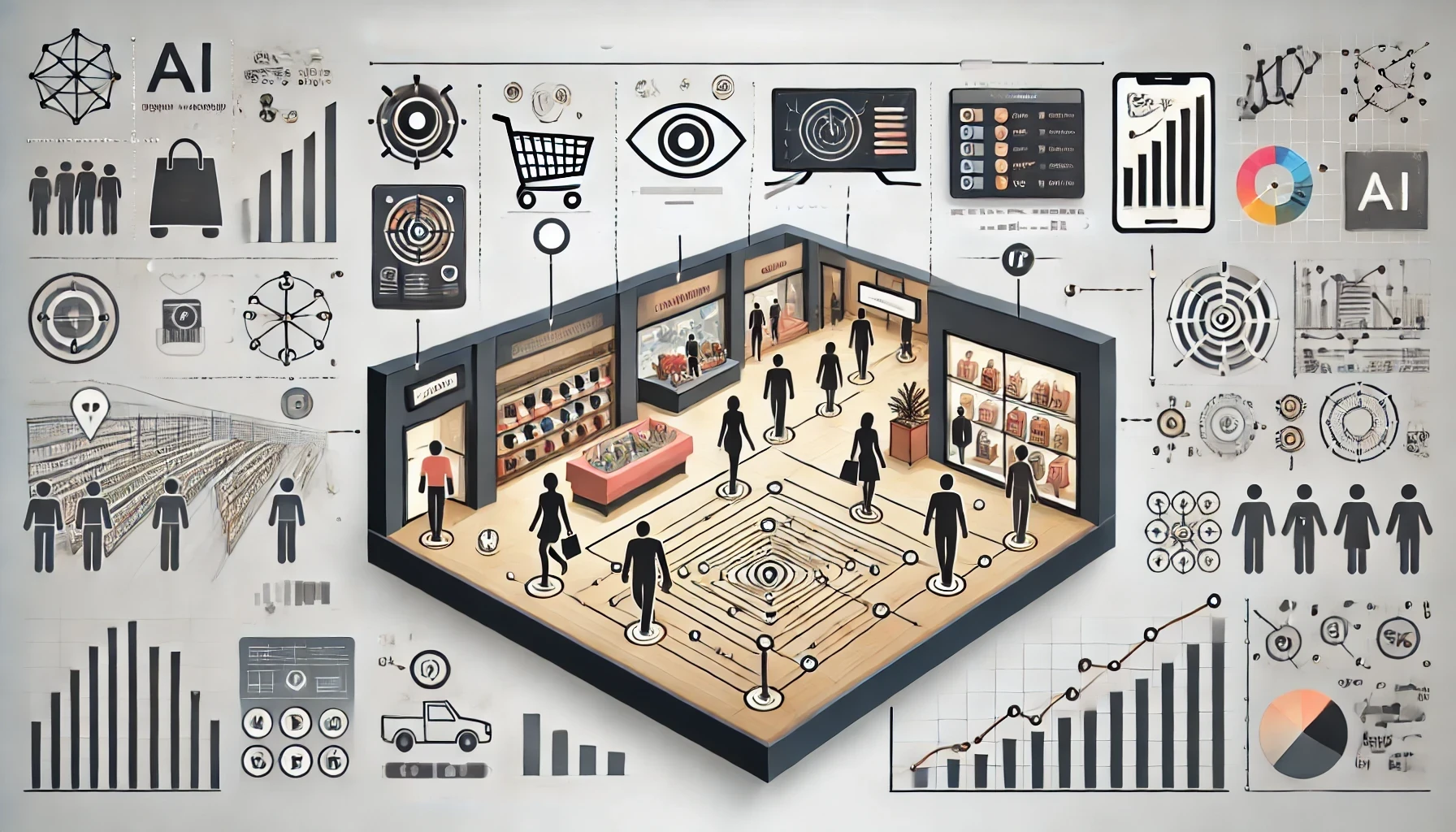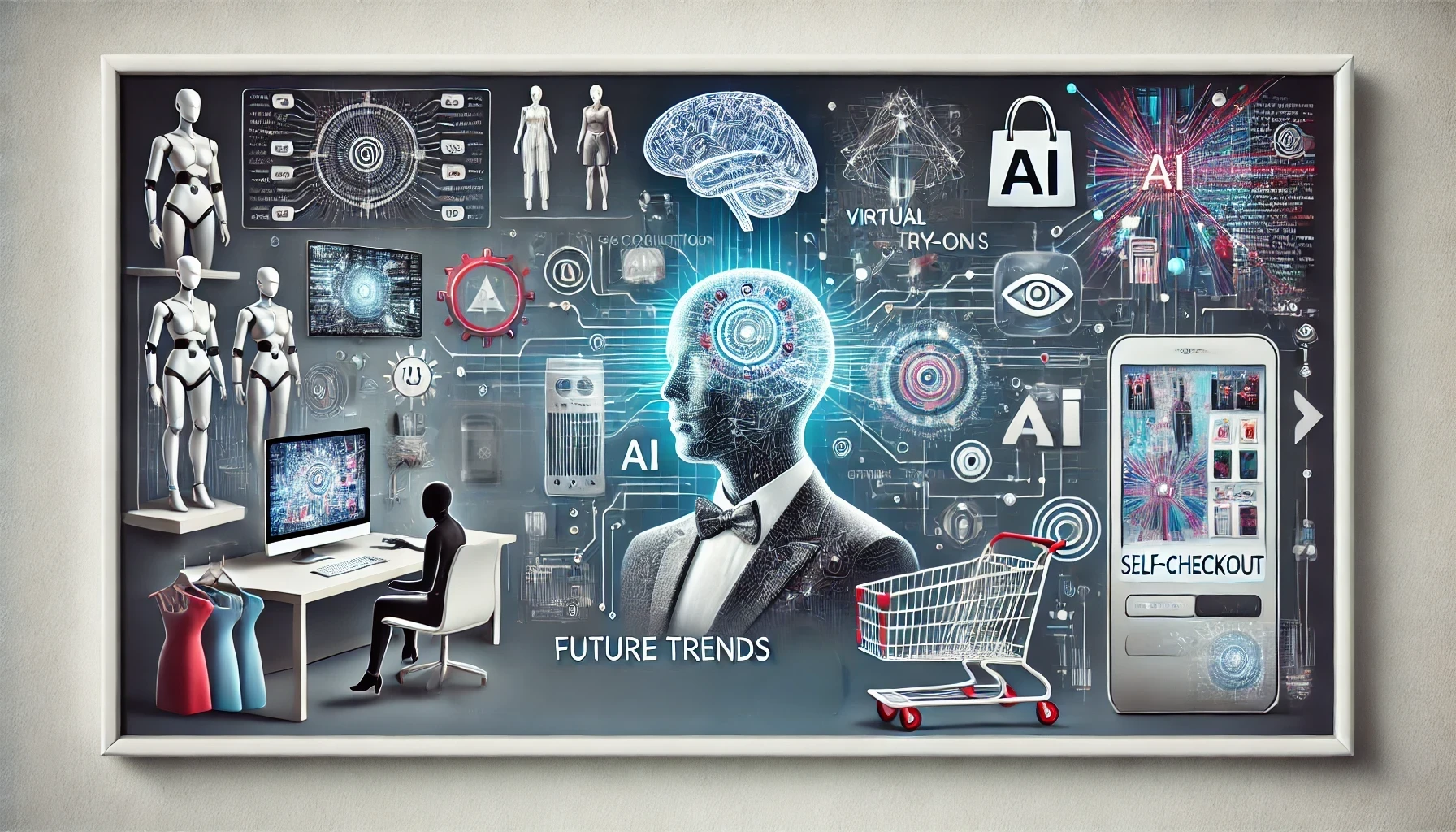Retail Analytics: Using AI-Powered Image Recognition for Customer Insights and Behavior Tracking
Introduction
What is Retail Analytics?
Retail analytics refers to the process of gathering and analyzing data from retail operations to improve decision-making and enhance business performance. In modern retail environments, where competition is fierce, retailers rely on analytics to gain deeper insights into customer behavior, optimize inventory management, and drive sales. By leveraging data-driven insights, businesses can make informed decisions about product placement, pricing, and marketing strategies.
One of the most valuable aspects of retail analytics is its ability to reveal patterns in customer behavior. Traditionally, retailers relied on transactional data such as purchase history to understand consumer preferences. However, with advancements in technology, retail analytics now offers a more comprehensive view of the customer journey. From tracking foot traffic to monitoring customer interactions with products, data can provide a granular understanding of how shoppers navigate stores and what influences their purchasing decisions.
The Emergence of AI in Retail Analytics
In recent years, the integration of AI-powered image recognition has transformed retail analytics. This cutting-edge technology allows retailers to go beyond basic transactional data by capturing real-time insights into customer behavior through visual data. AI-driven image recognition systems can analyze camera footage to detect key details such as customer demographics, product interactions, and even emotions. This information enables retailers to gain a more accurate and complete understanding of their audience, leading to more effective marketing strategies and improved customer experiences.
Machine learning and artificial intelligence are key components of this technological evolution. By training algorithms on vast amounts of visual data, AI systems can learn to recognize patterns in customer behavior, detect store activity trends, and make predictions that help retailers optimize store layouts, product placements, and promotional campaigns. The significance of AI in retail analytics lies in its ability to provide real-time, actionable insights that drive both operational efficiency and personalized customer experiences.
In today’s highly competitive retail landscape, businesses that adopt AI-powered image recognition are better positioned to understand their customers and deliver tailored shopping experiences that foster loyalty and boost sales.
Understanding AI-Powered Image Recognition in Retail
How Image Recognition Works in a Retail Setting
AI-powered image recognition is revolutionizing the retail industry by enabling stores to capture and analyze real-time visual data. This advanced technology allows retailers to identify objects, people, and patterns within images and video feeds, providing a wealth of insights into customer behavior and store operations.
At its core, AI image recognition uses deep learning algorithms to analyze visual data from cameras and sensors installed throughout a retail store. These algorithms are trained on large datasets, allowing them to detect and categorize objects, such as products on shelves or customer faces. Object detection is one key component, allowing AI to recognize products, analyze their arrangement, and track their availability on shelves. Another crucial technology is facial recognition, which identifies customer demographics such as age, gender, and even emotion, offering personalized insights into shopper preferences and moods.
Cameras and sensors play a vital role in this system. They continuously capture images and videos in-store, feeding data to AI models that process this information in real-time. By integrating these systems with existing retail infrastructure, stores can gain actionable insights that help optimize operations and improve the customer experience.
Types of Data Gathered via Image Recognition
AI-powered image recognition gathers a variety of valuable data in retail environments, giving stores a detailed view of customer interactions and behavior. One key type of data is product identification. By tracking which products customers engage with, retailers can understand what items attract attention, how often they are picked up, and whether they lead to a purchase. This data is critical for optimizing product placement and managing inventory levels.
Image recognition also captures important information about customer demographics. Using facial recognition technology, AI systems can estimate customer age, gender, and other attributes, enabling personalized marketing and promotional strategies. Understanding the demographics of foot traffic can help retailers tailor product offerings and store layouts to better meet the needs of their audience.
Another crucial aspect of image recognition is behavioral pattern analysis. AI can generate heatmaps to visualize customer movement throughout the store, identifying high-traffic areas and customer dwell time. By analyzing foot traffic, retailers can optimize store layouts, improve product placement, and ensure that high-demand products are easily accessible. Additionally, tracking customer interactions with products helps retailers understand which items are most popular and why.
This wealth of data empowers retailers to enhance the shopping experience, offering personalized service and strategic product placement while streamlining operational efficiency. AI-powered image recognition is becoming an indispensable tool for retailers seeking to stay competitive and maximize customer satisfaction.
Applications of Image Recognition for Customer Insights
Customer Demographics Analysis
AI-powered image recognition offers an unparalleled ability to analyze customer demographics by identifying characteristics such as age, gender, and even shopping preferences based on visual data collected from in-store foot traffic. Cameras positioned strategically throughout the store capture images of customers as they browse, allowing AI systems to extract demographic information in real-time. This capability enables retailers to gain a deeper understanding of their customer base without requiring invasive surveys or loyalty programs.
By gathering demographic insights, retailers can fine-tune product placement and tailor marketing strategies. For example, stores can display products and promotions that are more likely to appeal to specific customer groups in high-traffic areas. If a store frequently attracts a younger demographic, it can adjust its product mix and advertising to align with their preferences. This real-time demographic data provides a critical advantage, allowing retailers to respond quickly to shifts in customer behavior and adjust their strategies for maximum effectiveness.
Customer Sentiment and Emotion Tracking
One of the most powerful applications of AI image recognition in retail is the ability to gauge customer sentiment through facial recognition technology. Advanced AI models can analyze facial expressions to detect emotions such as happiness, frustration, or indecision. By tracking these emotional cues, retailers can assess how customers feel about the shopping experience, product displays, or specific interactions with sales staff.
Micro-expression analysis allows AI systems to capture subtle facial movements that might reveal a shopper’s underlying mood, even if they do not outwardly express it. This emotional insight is invaluable for measuring shopper satisfaction, as it helps retailers understand how customers are responding to in-store environments and services. By identifying moments of frustration or dissatisfaction, retailers can intervene proactively, whether by improving store layouts, adjusting promotions, or providing more personalized assistance.
Foot Traffic Analysis
AI-powered image recognition also excels in tracking foot traffic patterns within retail environments. By monitoring customer movements in-store, retailers can gain insights into how shoppers navigate the space, which areas of the store attract the most attention, and where customers tend to spend the most time. This data is visualized through heatmaps and flow charts, revealing the most popular store areas and helping to identify any potential bottlenecks or dead zones.
Understanding dwell time — how long customers spend in specific areas — can inform decisions about where to place high-margin products or promotional displays. Additionally, crowd flow management becomes more efficient when retailers can anticipate peak times and adjust staff allocations or store layouts accordingly. For example, if data reveals that a certain aisle consistently receives heavy foot traffic, the retailer may decide to expand the space or move high-demand products to reduce congestion.
This detailed foot traffic analysis helps optimize store layouts for a better shopping experience. By arranging products and displays based on real customer behavior, retailers can encourage more interaction with products, streamline the shopping journey, and ultimately drive more sales.
By leveraging AI-powered image recognition for customer demographics, sentiment tracking, and foot traffic analysis, retailers gain actionable insights that enhance personalization, improve store efficiency, and deliver a more engaging shopping experience.
Behavior Tracking and Personalized Shopping Experience
Customer Behavior Tracking
AI-powered image recognition technology plays a crucial role in tracking customer behavior by identifying patterns in how shoppers browse and interact with products. By analyzing in-store camera feeds, AI systems can observe where customers spend the most time, which products they pick up, and what areas of the store they frequent. This detailed tracking helps retailers understand which products attract the most attention and whether customers are merely browsing or ready to make a purchase.
Additionally, AI enables retailers to track repeat visitors and gauge customer loyalty. By recognizing returning customers, AI systems can offer tailored shopping experiences based on past behavior. For instance, a shopper who regularly visits a specific section of the store may be targeted with personalized product recommendations or discounts. AI can also link in-store behavior with online activity, creating a seamless omnichannel experience. Retailers can use this data to synchronize marketing efforts across digital platforms and physical stores, providing a consistent, personalized shopping journey that spans multiple touchpoints.
Personalized Marketing
Personalized marketing is a powerful outcome of AI-based image recognition in retail. By analyzing customer behavior and demographic data in real time, AI systems can enable personalized product recommendations that cater to individual shopper preferences. For example, a customer who frequently visits the electronics section may be shown promotions for the latest gadgets, while another shopper interested in fashion may receive targeted recommendations for new clothing arrivals.
AI-driven image recognition also enables real-time in-store ads and promotions. Based on a customer’s profile, AI can trigger dynamic in-store displays or digital signage to showcase relevant offers. This level of personalization enhances the shopping experience, making customers feel valued and understood while increasing the likelihood of purchase.
Product and Shelf Interaction
AI-powered image recognition provides detailed insights into how customers engage with product displays. By analyzing visual data, retailers can understand how often customers pick up a product, how long they spend examining it, and whether they ultimately make a purchase. This data is invaluable for optimizing product placement, as it reveals which items capture the most attention and drive sales.
The impact of product placement on purchases is another key insight AI offers. By monitoring how products are arranged on shelves and how customers respond, retailers can identify which placements are most effective. For example, placing high-demand products at eye level may increase sales, while low-traffic areas might benefit from more prominent displays. These insights allow retailers to continuously refine their store layout, ensuring that product placement maximizes engagement and conversion rates.
Incorporating AI-powered image recognition for customer behavior tracking, personalized marketing, and product interaction analysis transforms the retail experience, helping retailers optimize their strategies to meet customer needs while driving sales and loyalty.
Enhancing Store Operations and Decision-Making
Optimizing Inventory Management
One of the most impactful applications of AI-powered image recognition in retail is optimizing inventory management. By using cameras and sensors to monitor stock levels in real-time, AI systems can automatically detect when shelves are running low and trigger restocking alerts. This proactive monitoring ensures that stores remain well-stocked, preventing the dreaded out-of-stock situations that can frustrate customers and lead to lost sales.
Moreover, automating restocking processes with AI reduces the reliance on manual stock checks, improving overall efficiency. For example, when image recognition detects that a product is running low, it can automatically update the inventory system and even reorder items, ensuring timely replenishment. This level of automation minimizes stockouts and improves inventory turnover, leading to higher customer satisfaction and better sales performance.
Staff Allocation and Efficiency
AI-driven image recognition also enhances operational efficiency by providing valuable insights into foot traffic patterns, which can be used to optimize staff allocation. By analyzing where customers tend to gather and when foot traffic peaks, retailers can position employees in the most strategic locations to assist shoppers effectively. For instance, if image recognition data shows that certain areas of the store experience heavy traffic during specific hours, managers can ensure that enough staff are present to help customers, reduce wait times, and maintain a smooth shopping experience.
Additionally, AI can predict future customer flows and suggest staff allocations accordingly, ensuring that the store is adequately staffed during peak times and not overstaffed during slow periods. This data-driven approach to staffing efficiency leads to better customer service and more streamlined store operations, ultimately reducing labor costs and improving productivity.
Loss Prevention and Security
Loss prevention and store security are critical concerns for retailers, and AI-powered image recognition offers advanced solutions to tackle these challenges. By integrating image recognition with surveillance systems, retailers can monitor customer behavior in real-time and detect suspicious activities that may indicate theft or fraud. For example, AI can identify behaviors such as prolonged loitering, unusual movements, or attempts to hide items, allowing store personnel to intervene quickly before losses occur.
In addition to theft prevention, AI-driven security systems can help identify unauthorized access to restricted areas and improve overall store safety. By leveraging AI-powered image recognition, retailers can enhance the effectiveness of their security measures, reducing shrinkage and improving store security without the need for constant human oversight.
With AI-powered image recognition, retailers can make informed decisions that optimize inventory management, improve staff allocation, and bolster loss prevention efforts, all of which contribute to a more efficient and secure store operation.
Ethical Considerations and Challenges
Privacy Concerns
One of the most significant challenges in implementing AI-powered image recognition for retail analytics is addressing customer privacy concerns. As cameras and sensors collect data on customer movements, demographics, and behaviors, retailers must ensure that they comply with stringent data protection regulations, such as the General Data Protection Regulation (GDPR). Under these laws, retailers are required to handle personal data responsibly, ensuring that customer information is collected, processed, and stored securely.
Retailers must also focus on maintaining transparency with their customers regarding data collection practices. Shoppers should be informed about how their data is being used, and retailers should offer clear opt-in and opt-out options for data collection. By adopting transparent privacy policies and ensuring that data is anonymized and securely stored, retailers can build trust and avoid potential legal pitfalls. Transparent communication is key to ensuring that customers feel comfortable with the use of AI-powered technologies in retail settings.
Bias in AI Models
Another ethical concern with image recognition technology is the potential for bias in AI models. AI systems trained on biased datasets may misinterpret demographic data, leading to inaccurate conclusions about customer behavior. For example, facial recognition systems might struggle to correctly identify people of certain ethnicities, age groups, or genders, resulting in skewed insights or unfair treatment. Similarly, emotion detection models may misinterpret expressions, leading to biased results when analyzing customer sentiment.
To combat these biases, retailers must prioritize ethical AI practices, ensuring that the data used to train their AI models is diverse and representative of the broader population. Regular audits and updates of AI systems are essential to maintaining accuracy and fairness in image recognition. Additionally, retailers should collaborate with AI developers to continually refine algorithms, reducing the risk of bias and ensuring that customer insights are accurate and equitable.
Technical Challenges
Beyond ethical concerns, the implementation of AI-powered image recognition in retail faces several technical challenges. One of the primary hurdles is the high cost of AI implementation. Installing cameras, sensors, and AI processing systems across large retail spaces can be expensive, particularly for smaller businesses. Additionally, integrating these systems with existing retail infrastructure requires significant investments in technology and training.
Another challenge is the management of data storage and processing. Image recognition generates vast amounts of visual data that must be stored, processed, and analyzed in real-time. This requires robust data infrastructure and cloud computing solutions, which can increase operational costs. Furthermore, integrating AI-powered image recognition systems with other retail systems, such as inventory management and point-of-sale software, can be complex and time-consuming, requiring specialized technical expertise.
By addressing these technical and ethical challenges, retailers can ensure that AI-powered image recognition is implemented responsibly and efficiently, maximizing its potential for improving customer insights while maintaining customer trust.
Future Trends in AI-Powered Image Recognition for Retail
Enhanced Personalization and Customer Journey Mapping
As AI-powered image recognition continues to evolve, one of the most promising trends is the advancement of predictive analytics for even more detailed customer journey insights. AI systems will not only track customer behavior in real-time but also predict future actions based on historical data and behavioral patterns. By leveraging these predictions, retailers can further enhance personalization, tailoring offers and product recommendations to individual preferences with greater accuracy. For instance, AI could predict which products a customer is likely to purchase based on their past in-store and online behaviors, allowing retailers to send timely promotions or suggest complementary items.
A significant future trend will also involve seamless integration of AI across both in-store and online experiences. As retailers aim to create unified omnichannel shopping journeys, AI will bridge the gap between digital and physical retail spaces. By linking a customer’s online browsing history with their in-store behavior, retailers can deliver a more cohesive shopping experience. For example, a customer who adds an item to their online cart but doesn’t complete the purchase might receive personalized recommendations or targeted promotions when they visit the store. This enhanced personalization will drive customer engagement and increase conversion rates across all retail channels.
Advanced Emotion AI
The next evolution of emotion AI will involve significant advancements in detecting and analyzing more complex human emotions. Current systems can already gauge basic emotions such as happiness, frustration, or surprise based on facial expressions. However, future AI models will become increasingly sophisticated, allowing them to capture nuanced emotions such as empathy, confusion, or interest, which are more difficult to detect.
This progress will enable retailers to gain deeper insights into shopper sentiment and satisfaction. By analyzing how customers react to different store layouts, product displays, and interactions with staff, retailers can continuously optimize the in-store experience. Advanced emotion AI will also improve personalized marketing efforts, as AI systems can adapt marketing messages or product recommendations based on a customer’s emotional response in real time. This increased emotional intelligence will help retailers foster stronger connections with their customers and boost loyalty.
AI-Driven Store Automation
As AI-powered image recognition continues to advance, the concept of fully autonomous stores is becoming a reality. In the future, AI will manage not only inventory and customer interactions but also the entire sales process, creating a completely automated retail environment. AI-driven automation will streamline operations by monitoring stock levels in real-time, triggering automatic restocking, and even managing pricing adjustments based on demand.
In these autonomous stores, AI systems will also handle customer interactions without the need for human staff. From personalized shopping assistants to self-checkout stations, AI will guide customers through their shopping experience, offering recommendations and answering questions along the way. This level of automation not only improves efficiency but also enhances the customer experience by providing tailored, real-time support.
Moreover, AI will revolutionize the sales process, making it seamless and efficient. For example, AI-powered checkout systems could automatically scan and charge customers for items as they leave the store, eliminating the need for traditional checkout lines. As AI technology continues to advance, retailers will move closer to fully automated stores, improving both operational efficiency and customer satisfaction.
By embracing these future trends, retailers can unlock the full potential of AI-powered image recognition, enhancing personalization, gaining deeper insights into customer emotions, and automating store operations for a more efficient and engaging shopping experience.
Conclusion
The Growing Importance of AI in Retail Analytics
As the retail landscape becomes increasingly competitive, AI-powered image recognition is emerging as a crucial tool for retailers looking to enhance both customer insights and operational efficiency. By harnessing the power of AI, retailers can gather real-time data on customer demographics, behaviors, and emotions, enabling them to make more informed decisions about product placement, marketing strategies, and customer engagement. Additionally, AI’s ability to monitor foot traffic, manage inventory, and even prevent theft streamlines store operations, allowing retailers to optimize staff allocation and reduce costs. These advancements not only enhance the shopping experience but also boost overall store performance, driving both customer satisfaction and sales.
The Future of Retail
Looking ahead, retailers who adopt AI technologies will be better positioned to understand their customers on a deeper level and deliver more personalized shopping experiences. The future of retail lies in the seamless integration of AI across both online and in-store environments, allowing for predictive insights, advanced emotion detection, and fully automated stores. By embracing these cutting-edge technologies, retailers can stay ahead of the curve, offering tailored experiences that foster loyalty and differentiate them from competitors.
The rise of AI-powered image recognition is transforming how retailers interact with their customers, and those who invest in this technology today will shape the future of retail.






